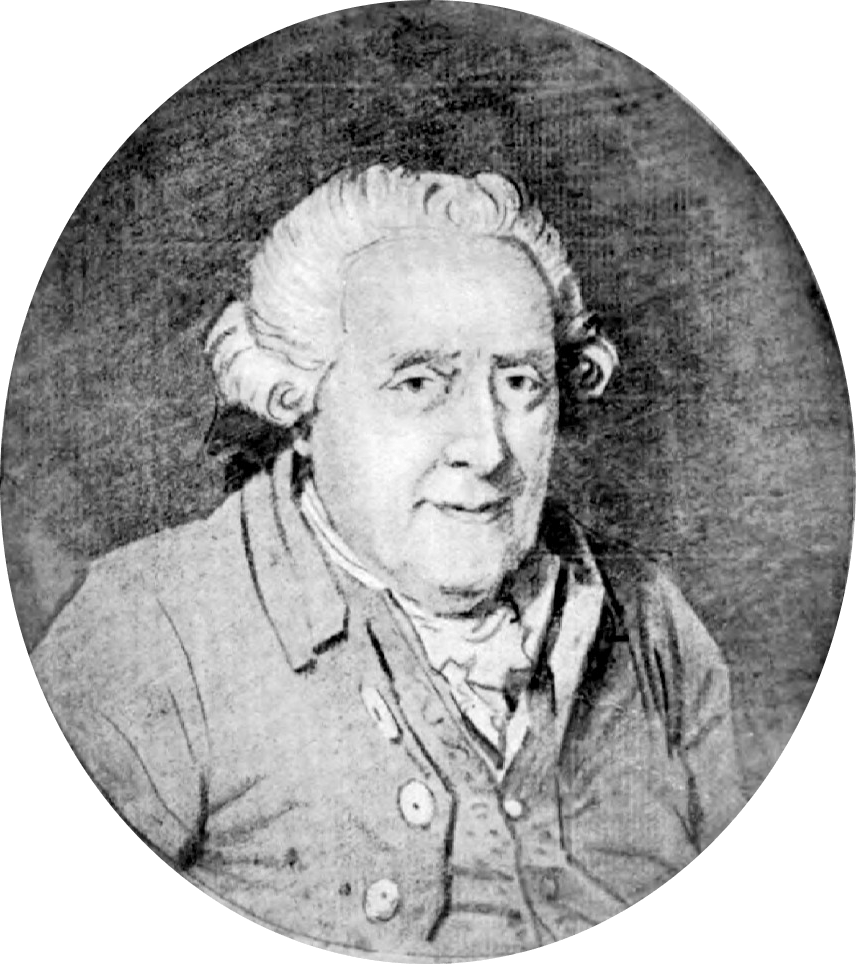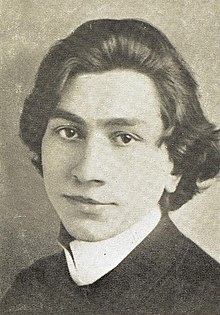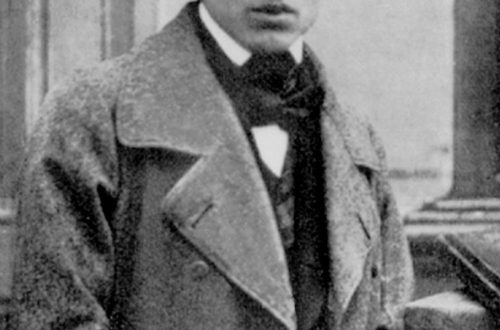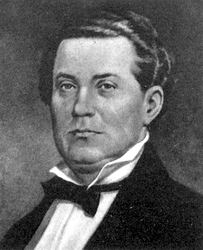
Wilhelm Friedemann Bach |
Wilhelm Friedemann Bach
… he spoke to me about music and about one great organist named W. F. Bach … This musician has an outstanding gift for everything I have heard (or can imagine), in terms of the depth of harmonic knowledge and the power of performance … G. van Swiegen – Prince. Kaunitz Berlin, 1774
The sons of J.S. Bach left a bright mark on the music of the XNUMXth century. The glorious galaxy of four brothers-composers is rightly headed by the eldest of them Wilhelm Friedemann, nicknamed in history by the “Gallic” Bach. The first-born and favorite, as well as one of the first students of his great father, Wilhelm Friedemann inherited the traditions bequeathed to him to the greatest extent. “Here is my beloved son,” Johann Sebastian used to say, according to legend, “my good will is in him.” It is no coincidence that the first biographer of J. S. Bach, I. Forkel, believed that “Wilhelm Friedemann, in terms of the originality of the melody, was closest to his father,” and, in turn, his son’s biographers rank him among “the last servants of the baroque organ tradition.” However, another characteristic is no less characteristic: “a romantic among the German masters of musical rococo.” Actually there is no contradiction here.
Wilhelm Friedemann was indeed equally subject to rational rigor and unbridled fantasy, dramatic pathos and penetrating lyricism, transparent pastorality and elasticity of dance rhythms. From childhood, the composer’s musical education was put on a professional footing. For him, the first J. S. Bach began to write “lessons” for the clavier, which, along with selected works by other authors, were included in the famous “Clavier Book of W. F. Bach.” The level of these lessons – here the preludes, inventions, dance pieces, arrangements of the chorale, which have become a school for all subsequent generations – reflects the rapid development of Wilhelm Friedemann as a harpsichordist. Suffice it to say that the preludes of Volume I of the Well-Tempered Clavier, which were part of the booklet, were intended for a twelve-year-old (!) musician. In 1726, violin lessons with I. G. Braun were added to clavier studies, and in 1723 Friedemann graduated from the Leipzig Thomasschule, having received a solid general education for a musician at the University of Leipzig. At the same time, he is an active assistant to Johann Sebastian (by that time the cantor of the Church of St. Thomas), who led the rehearsals and scheduling of parties, often replacing his father at the organ. Most likely, the Six Organ Sonatas appeared then, written by Bach, according to Forkel, “for his eldest son Wilhelm Friedemann, in order to make him a master of playing the organ, which he later became.” It is not surprising that with such preparation, Wilhelm Friedemann brilliantly passed the test for the post of organist in the Church of St. Sophia in Dresden (1733), where, however, they already managed to recognize him by the clavirabend given earlier jointly with Johann Sebastian. Father and son performed double concertos, apparently composed by Bach Sr. especially for this occasion. 13 Dresden years is a time of intense creative growth of the musician, which was greatly facilitated by the atmosphere of one of the most brilliant musical centers in Europe. In the circle of new acquaintances of the young Leipzigian, the head of the Dresden Opera is the famous I. Hasse and his no less famous wife, the singer F. Bordoni, as well as court instrumental musicians. In turn, the Dresdeners were captivated by the skill of Wilhelm Friedemann, a harpsichordist and organist. He becomes a fashion educator.
At the same time, the organist of the Protestant church, to whom Wilhelm Friedemann remained deeply faithful according to his father’s behest, could not help but experience some alienation in Catholic Dresden, which probably served as an impetus for moving to a more prestigious field in the Protestant world. In 1746, Wilhelm Friedemann (without trial!) took the very honorary post of organist at the Liebfrauenkirche in Halle, becoming a worthy successor to F. Tsakhov (teacher G. F. Handel) and S. Scheidt, who once glorified their parish.
To match his remarkable predecessors, Wilhelm Friedemann attracted the flock with his inspired improvisations. “Gallic” Bach also became the city’s musical director, whose duties included holding city and church festivities, in which the choirs and orchestras of the three main churches of the city participated. Do not forget Wilhelm Friedemann and his native Leipzig.
The Gallic period, which lasted almost 20 years, was not cloudless. “The most venerable and learned Mr. Wilhelm Friedemann,” as he was called in his time in the Gallic invitation, gained a reputation, objectionable to the fathers of the city, of a free-thinking man who does not want to unquestioningly fulfill the “zeal for a virtuous and exemplary life” specified in the contract. Also, to the displeasure of the church authorities, he often went away in search of a more advantageous place. Finally, in 1762, he completely abandoned the status of a musician “in the service”, becoming, perhaps, the first free artist in the history of music.
Wilhelm Friedemann, however, did not stop caring about his public face. So, after long-term claims, in 1767 he received the title of Darmstadt court Kapellmeister, declining, however, the offer to take this place not nominally, but in reality. Staying in Halle, he barely made a living as a teacher and organist, who still amazed connoisseurs with the fiery scope of his fantasies. In 1770, driven by poverty (his wife’s estate was sold under the hammer), Wilhelm Friedemann and his family moved to Braunschweig. Biographers note the Brunswick period as especially pernicious for the composer, who spends himself indiscriminately at the expense of constant studies. The carelessness of Wilhelm Friedemann had a sad effect on the storage of his father’s manuscripts. Heir to priceless Bach autographs, he was ready to part with them easily. Only after 4 years did he remember, for example, his following intention: “… my departure from Braunschweig was so hasty that I was not able to compile a list of my notes and books left there; about my father’s The Art of Fugue… I still remember, but other ecclesiastical compositions and annual sets…. Your Excellency … they promised to turn me into money at an auction with the involvement of some musician who understands such literature.
This letter was already sent from Berlin, where Wilhelm Friedemann was kindly received at the court of Princess Anna Amalia, the sister of Frederick the Great, a great music lover and patron of the arts, who was delighted with the master’s organ improvisations. Anna Amalia becomes his student, as well as Sarah Levy (F. Mendelssohn’s grandmother) and I. Kirnberger (court composer, once a student of Johann Sebastian, who was a patron of Wilhelm Friedemann in Berlin). Instead of gratitude, the newly-minted teacher had views of Kirnberger’s place, but the tip of the intrigue turns against him: Anna-Amalia deprives Wilhelm Friedemann of her grace.
The last decade in the composer’s life is marked by loneliness and disappointment. Music-making in a narrow circle of connoisseurs (“When he played, I was seized with a sacred awe,” recalls Forkel, “everything was so majestic and solemn …”) was the only thing that brightened up bleak days. In 1784, Wilhelm Friedemann dies, leaving his wife and daughter without a livelihood. It is known that a collection from the Berlin performance of Handel’s Messiah in 1785 was donated to their benefit. Such is the sad end of Germany’s first organist, according to the obituary.
The study of Friedemann’s legacy is much more difficult. First, according to Forkel, “he improvised more than he wrote.” In addition, many manuscripts cannot be identified and dated. Friedemann’s apocrypha has not been fully disclosed either, the possible existence of which is indicated by not entirely plausible substitutions that were discovered during the composer’s lifetime: in one case, he sealed his father’s works with his signature, in another, on the contrary, seeing what interest the manuscript heritage of Johann Sebastian arouses, he added to him two of his own opuses. For a long time Wilhelm Friedemann also attributed the organ Concerto in D minor, which has come down to us in a Bach copy. As it turned out, the authorship belongs to A. Vivaldi, and the copy was made by J. S. Bach back in the Weimar years, when Friedemann was a child. For all that, the work of Wilhelm Friedemann is quite extensive, it can be conditionally divided into 4 periods. In Leipzig (before 1733) several mainly clavier pieces were written. In Dresden (1733-46), mainly instrumental compositions (concerts, sonatas, symphonies) were created. In Halle (1746-70), along with instrumental music, 2 dozen cantatas appeared – the least interesting part of Friedemann’s legacy.
Slavically following on the heels of Johann Sebastian, he often composed his compositions from parodies of both his father’s and his own early works. The list of vocal works is supplemented by several secular cantatas, the German Mass, individual arias, as well as the unfinished opera Lausus and Lydia (1778-79, disappeared), conceived already in Berlin. In Braunschweig and Berlin (1771-84) Friedemann limited himself to the harpsichord and various chamber compositions. It is significant that the hereditary and lifelong organist left practically no organ heritage. The ingenious improviser, alas, could not (and perhaps did not strive), judging by Forkel’s already quoted remark, to fix his musical ideas on paper.
The list of genres, however, does not give grounds for observing the evolution of the master’s style. The “old” fugue and the “new” sonata, symphony and miniature did not replace each other in chronological order. Thus, the “pre-romantic” 12 polonaises were written in Halle, while 8 fugues, which betray the handwriting of the true son of their father, were created in Berlin with a dedication to Princess Amalia.
“Old” and “new” did not form that organic “mixed” style, which is typical, for example, for Philipp Emanuel Bach. Wilhelm Friedemann is more characterized by a constant fluctuation between the “old” and “new” sometimes within the framework of one composition. For example, in the well-known Concerto for two cembalos, the classical sonata in movement 1 is answered by the typically baroque concert form of the finale.
Very ambiguous in nature is the fantasy so characteristic of Wilhelm Friedemann. On the one hand, this is a continuation, or rather one of the peaks in the development of the original baroque tradition. With a stream of unrestricted passages, free pausing, expressive recitation, Wilhelm Friedemann seems to explode the “smooth” textured surface. On the other hand, as, for example, in the Sonata for viola and clavier, in 12 polonaises, in many clavier sonatas, bizarre thematism, amazing boldness and saturation of harmony, sophistication of major-minor chiaroscuro, sharp rhythmic failures, structural originality resemble some Mozart, Beethoven, and sometimes even Schubert and Schumann pages. This side of Friedemann’s nature is the best way to convey this side of Friedemann’s nature, by the way, quite romantic in spirit, the observation of the German historian F. Rochlitz: “Fr. Bach, detached from everything, not equipped and blessed with nothing but a lofty, heavenly fantasy, wandered, finding everything he was drawn to in the depths of his art.
T. Frumkis





